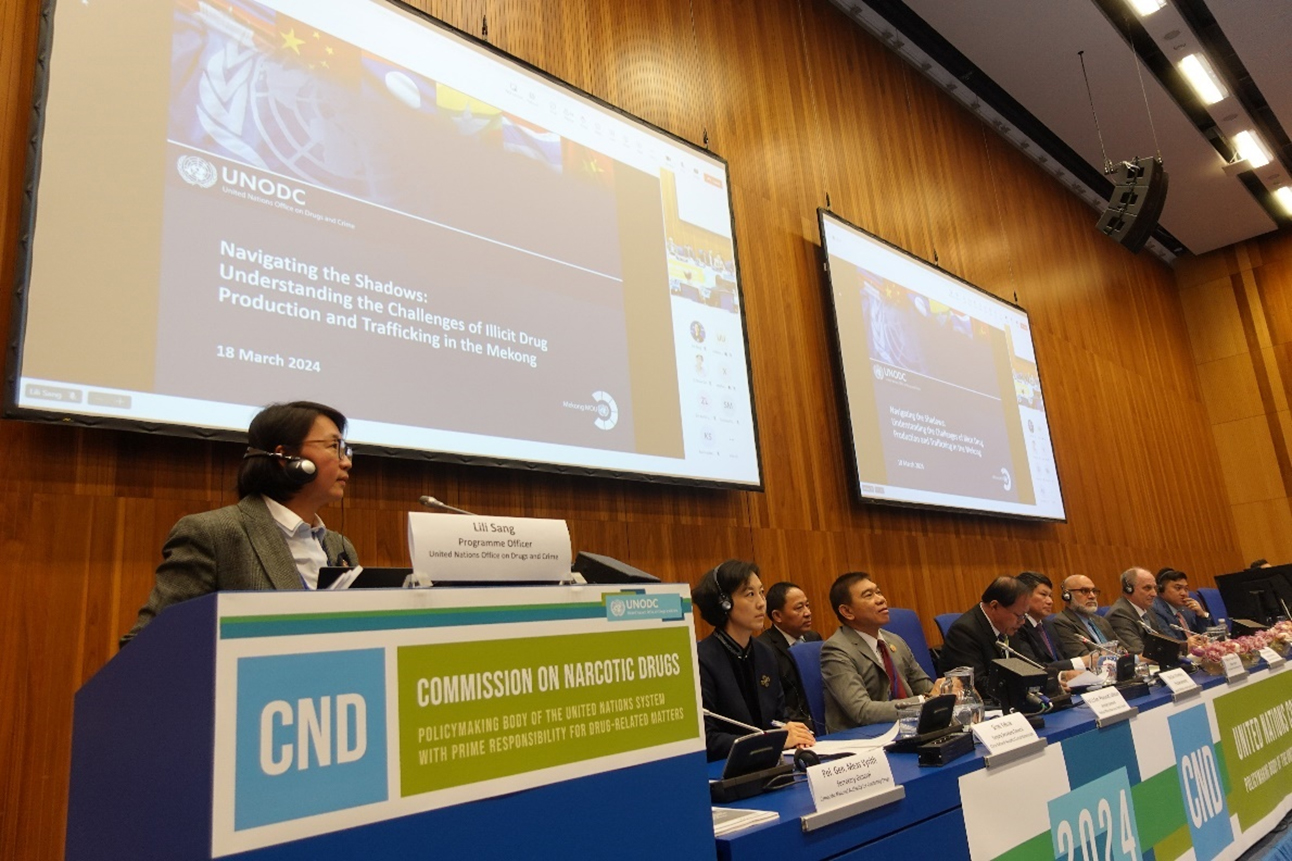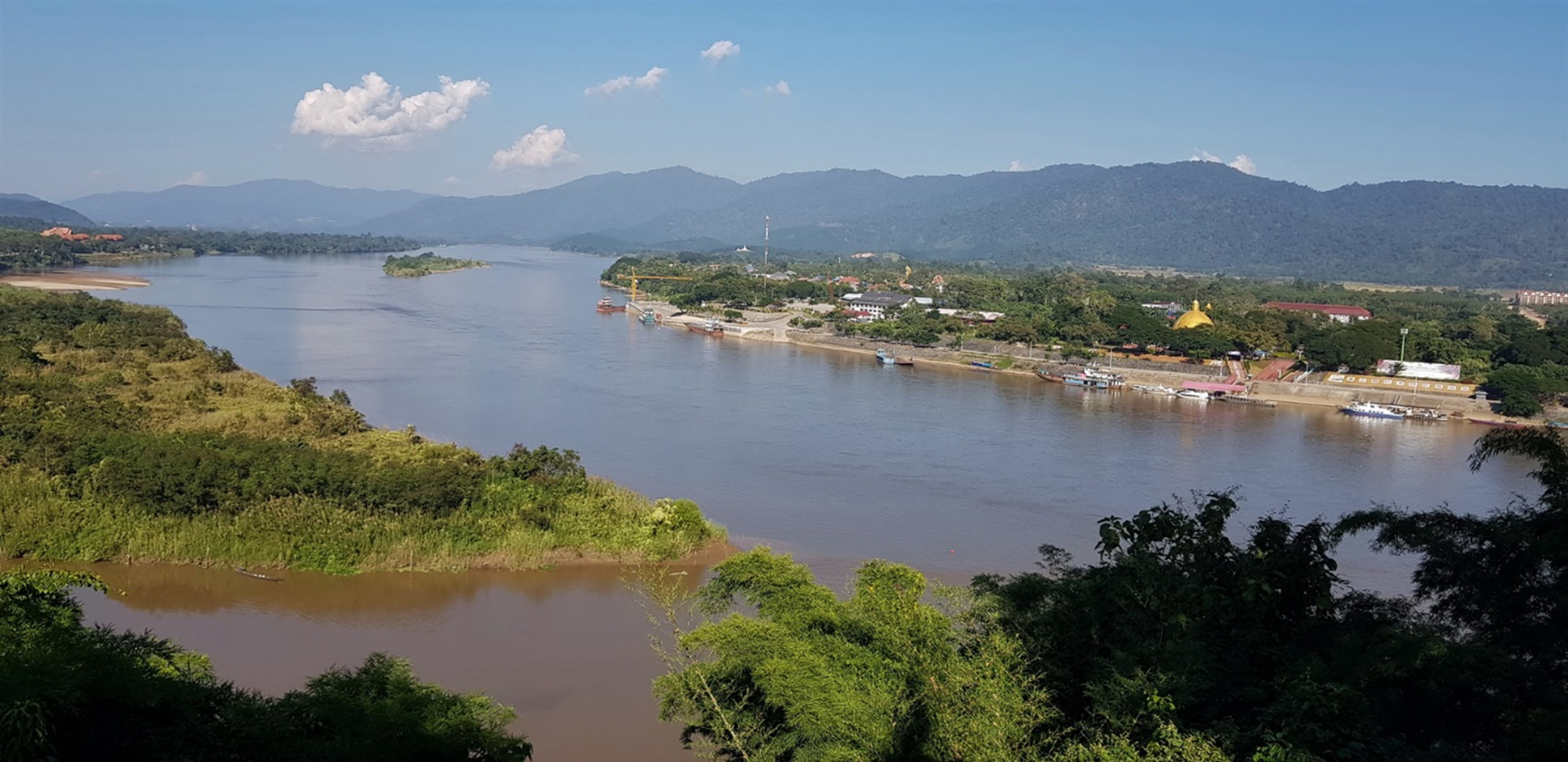
Bangkok (Thailand), 20 March 2024 - The Mekong is seeing a surge in synthetic drug production and trafficking, compounded by increasing levels of opium cultivation. To better understand and address this complex trend, experts and government representatives from the region met in Vienna yesterday during the 67th Commission on Narcotic Drugs (CND), where UN member states set policy and priorities on illicit drugs.
“Over the past years, the Mekong has seen massive growth in synthetic drug production and trafficking,” said Masood Karimipour, Regional Representative of the United Nations Office on Drugs and Crime (UNODC) for Southeast Asia and the Pacific. “Countries in the region recognize the urgency to work together more effectively in addressing these increasingly complex challenges, such as the diversion of chemicals from the legal trade into the drug economy.”
In 2023, Southeast Asia saw high levels of synthetic drug production, including ketamine and methamphetamine, with prices falling to a record low. UNODC has reported that authorities seized approximately 170 tons of methamphetamine and 22 tons of ketamine that year. The impact is felt throughout communities in Southeast Asia and beyond, where availability of these drugs is affecting the most vulnerable and, with tablets bought for less than a US dollar in some countries, the poor.

UNODC data also shows a revitalization of the opium economy in the Golden Triangle amidst economic disruptions and instability in Myanmar. Referring to UNODC’s latest Southeast Asia Opium Survey, Karimipour pointed to the increase in opium cultivation in Myanmar, where cultivation expanded by 18% from 2022 to 2023, reaching a total area of 47,100 hectares.
With Myanmar becoming the world’s largest opium producer, the Mekong is gaining strategic importance in the global drug market. Organized crime groups have expanded their areas of illicit manufacture of synthetic drugs beyond Myanmar’s Shan State to Cambodia and Lao PDR. Experts warn that a continued increase of heroin supply from the region is inevitable.
“The intertwining of drug trafficking with other criminal enterprises such as money laundering and cybercrime further amplifies the complexity of the situation in the Mekong,” Karimipour added.
Precursor chemicals: a growing concern
Producing drugs such as heroin, methamphetamine and ketamine requires the use of chemicals — so-called precursor chemicals — which are traded legally around the world for industrial and agricultural purposes. This year’s CND focuses on the growing diversity of precursor chemicals used in illicit drug production, a matter particularly relevant to the drug problem in East and Southeast Asia.
“The emphasis should be placed on […] the commitment to depriving drug traffickers of the chemicals needed, in particular the prevention of non-controlled chemicals being diverted to illicit drug production,” Secretary-General of Cambodia’s National Authority for Combating Drugs Meas Vyrith said at the event.
Experts also addressed the importance of enhancing the forensic capacity of countries in the region, such as Cambodia and Lao PDR, which may increasingly be targeted for illicit drug manufacturing as the situation evolves.
A need for continued cooperation
Multilateralism is key, as none of these challenges is confined to one country alone. UNODC supports this cooperation through, among others, the Mekong Memorandum of Understanding (MoU) on Drug Control. The Mekong MoU provides a framework for dialogue, coordination, and action among its six member states — Cambodia, China, Lao PDR, Myanmar, Thailand, and Viet Nam, with UNODC serving as the Secretariat and providing technical assistance.
“By implementing practical strategies, building capacities, establishing efficient information and intelligence exchange and joint operation mechanisms, remarkable achievements have been made,” said Shan Yehua, Deputy Secretary-General of China National Narcotics Control Commission, which recently announced an increase in its annual contribution to the MoU mechanism.
“The road ahead may be fraught with obstacles, but by working together with determination, unity, and resolve, we can overcome these challenges and build a safer, healthier, and more prosperous future for our region,” said Deputy Minister of Public Security in Lao PDR, Police Major General Khamking Phuilamanyvong.
Learn more:
Mekong MoU
67th Session of the CND
Subsidiary bodies of the CND
CND Side Events and Exhibitions